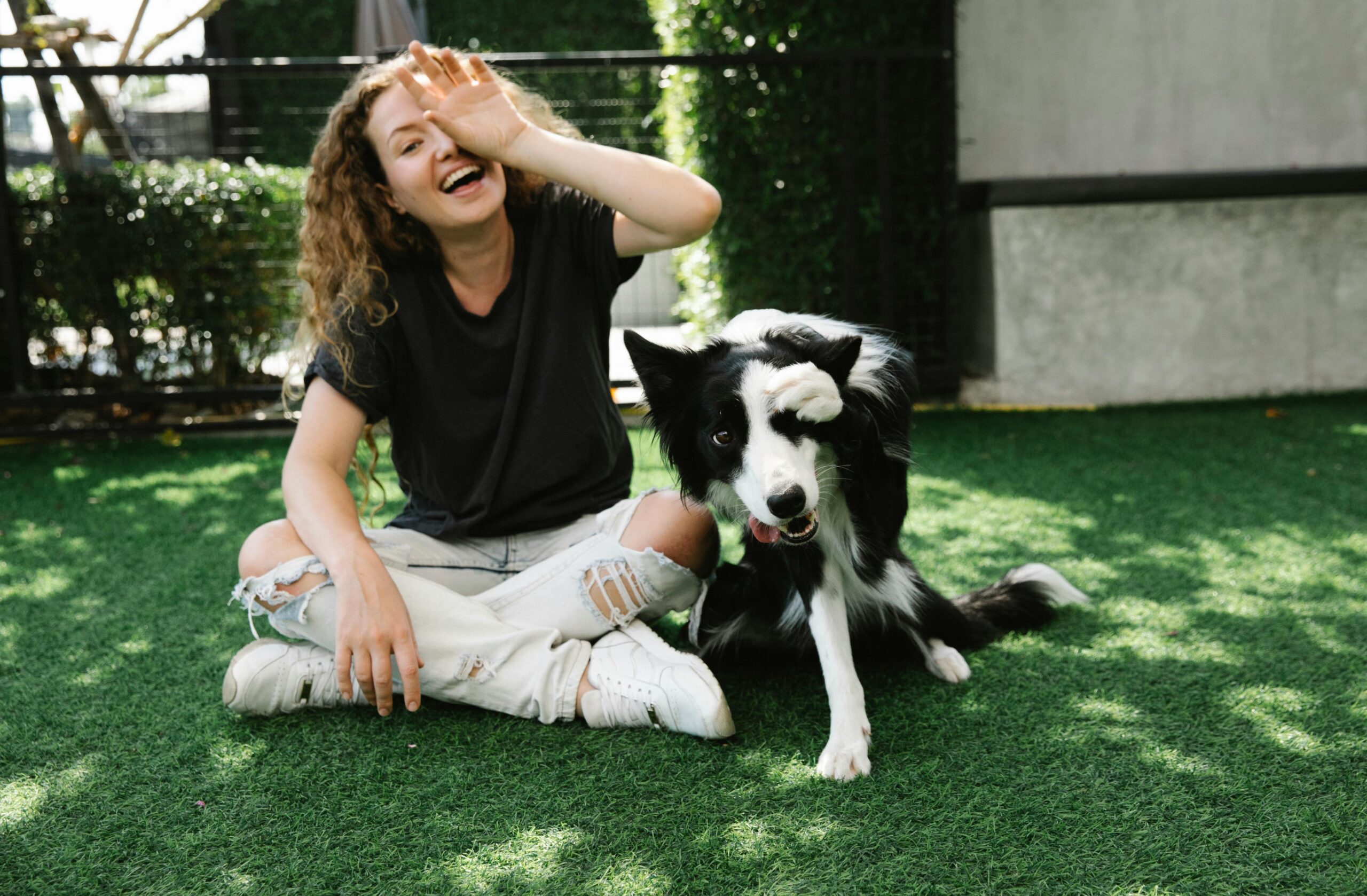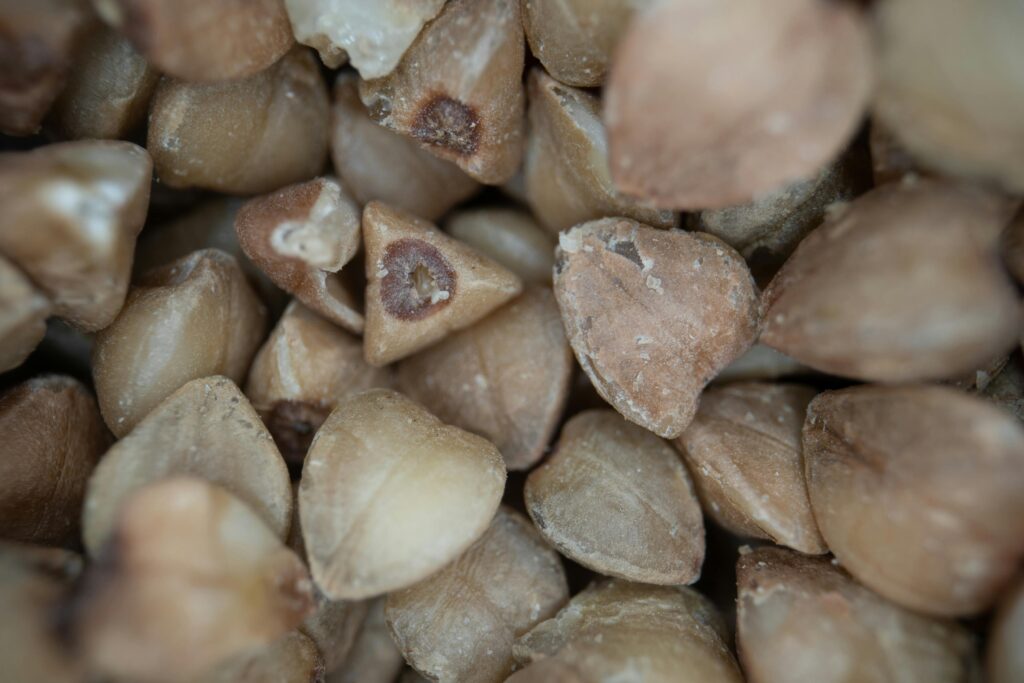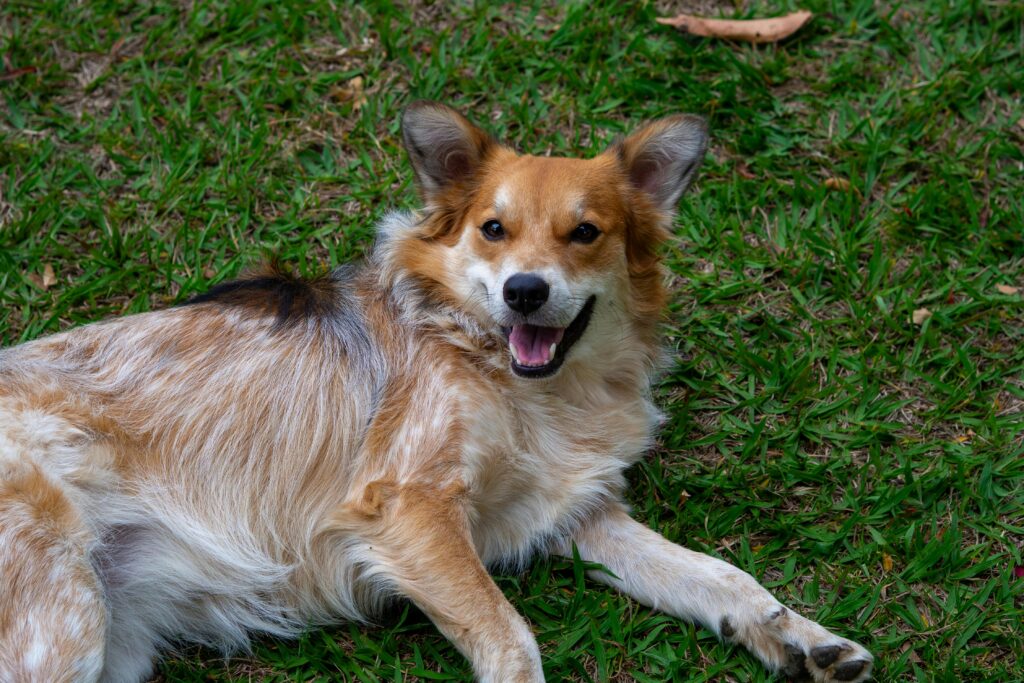Introduction to Beginner-Friendly Dog Breeds
Getting your first dog is one of the most exciting decisions you’ll ever make, but it’s also one that comes with responsibility. Just like choosing a new friend or roommate, picking the right dog breed can make all the difference in your experience as a first-time owner. Not all dogs are created equal when it comes to temperament, training needs, and adaptability. Some breeds are naturally gentle, easygoing, and eager to please, while others may require more experience, time, and patience to handle.
For beginners, the goal is usually to find a companion that is affectionate, friendly, and manageable without overwhelming demands. A good beginner dog should be well-mannered, trainable, and adaptable to different lifestyles. Whether you live in a small apartment in the city or a spacious home in the suburbs, there’s a breed out there that fits your lifestyle and personality.
In this guide, we’ll explore the best gentle and friendly dog breeds for beginners, breaking them down into small, medium, and large categories. We’ll also look at low-maintenance and hypoallergenic options, family-friendly breeds, and even apartment-approved pups. By the end, you’ll have a clearer picture of which furry companion might be the perfect match for your journey into dog ownership.
Think of this as your roadmap—a beginner’s manual to navigating the exciting world of dog breeds. Whether you’re drawn to playful small dogs, loyal medium-sized companions, or gentle giants, this article will help you make an informed choice and set you and your new dog up for success.
Understanding What Makes a Dog Beginner-Friendly
Not every dog breed is a perfect fit for a first-time owner. Some are naturally high-energy, independent, or stubborn, which can overwhelm someone who’s still learning the ropes. So, what makes a breed truly beginner-friendly? It boils down to a few key factors: temperament, trainability, adaptability, and maintenance needs.
Temperament and Personality Traits
Beginner-friendly breeds are usually calm, sociable, and affectionate. They aren’t overly aggressive, shy, or unpredictable. Instead, they tend to be people-oriented, enjoying human company and bonding easily with their owners. This makes them less intimidating for first-time owners who are still learning how to communicate with dogs.
Trainability and Adaptability
The best breeds for beginners are also highly trainable. They respond well to positive reinforcement and can quickly learn basic commands. These dogs also adapt easily to different living situations—whether it’s a quiet apartment or a busy family household.
Grooming and Maintenance Needs
Some breeds require professional grooming every few weeks, while others need only occasional brushing. Beginners often do better with dogs that don’t have excessive grooming needs or complicated health concerns. A low-maintenance coat and moderate exercise requirements make life much easier for a new dog owner.
In short, a beginner-friendly breed is one that brings joy, companionship, and learning without overwhelming challenges. By understanding these traits, you’ll be able to recognize which dogs are likely to thrive in your home and lifestyle.
Top Small Dog Breeds for Beginners
Small dogs are often a favorite choice for first-time owners because they’re easier to manage in terms of space, exercise, and care. But not all small breeds are created equal—some are feisty, stubborn, or too energetic for beginners. Here are a few gentle and friendly small dogs that are perfect for new owners:
Cavalier King Charles Spaniel
This affectionate breed is known for its gentle personality and eagerness to please. Cavaliers adapt well to both apartment living and houses with yards. They enjoy snuggling just as much as playing, making them an excellent choice for families or singles.
Pug
Pugs are natural clowns. Their playful, loving, and slightly goofy nature makes them fantastic companions for beginners. They don’t need intense exercise, but they thrive on human companionship and love to be part of family activities.
Shih Tzu
Known as the “little lion dog,” the Shih Tzu is a lap-loving breed with a calm temperament. They are great for those who want a cuddly, affectionate dog that doesn’t require intense exercise. Grooming can be a bit of work, but their personality makes up for it.
Bichon Frise
With their fluffy white coats and cheerful personalities, Bichons are great for first-time owners. They are friendly, adaptable, and hypoallergenic, which makes them a perfect choice for allergy sufferers.
These small breeds combine charm, playfulness, and adaptability—qualities that make them some of the best beginner-friendly options for new dog owners.
Top Medium-Sized Dog Breeds for Beginners
Medium-sized dogs strike the perfect balance for many new owners. They aren’t as delicate as small dogs, yet they don’t require the space or upkeep that giant breeds often demand. Many medium breeds are known for their friendliness, loyalty, and adaptability—qualities that make them excellent choices for beginners.
Labrador Retriever
One of the most popular dog breeds worldwide, the Labrador is practically the poster child for beginner-friendly dogs. Labs are affectionate, intelligent, and great with children. They do require regular exercise, but their trainability and loving nature make them a perfect match for first-time owners.
Golden Retriever
Often considered the most family-friendly breed, Goldens are gentle, loyal, and eager to please. They thrive in households with kids and love to be active. Their patience and intelligence make training a breeze, even for beginners.
Beagle
Beagles are small-to-medium dogs with a curious and playful nature. They are friendly with both humans and other pets, making them great for families. While they can be a little stubborn at times, their cheerful personality makes them a joy to own.
Cocker Spaniel
Cocker Spaniels are affectionate, loyal, and gentle dogs that adapt well to different living situations. Their sweet disposition and eagerness to bond with their owners make them one of the best choices for beginners.
Medium-sized breeds are often described as “just right”—not too big, not too small, but full of love and personality that makes them wonderful companions for first-time owners.
Top Large Dog Breeds for Beginners
Many beginners assume large dogs are too much to handle, but that’s not always the case. Some large breeds are gentle giants—calm, affectionate, and surprisingly easygoing. While they may need more space and food, their loving nature often makes them easier to manage than smaller, high-strung breeds.
Bernese Mountain Dog
These fluffy giants are affectionate, loyal, and patient. Despite their size, they are gentle and fantastic with kids. They enjoy outdoor activities but also love lounging with their family.
Greyhound
Known as the “couch potato of the dog world,” Greyhounds may surprise you with how calm they are. While they enjoy a good sprint, they spend most of their time relaxing, making them surprisingly low-maintenance for a large breed.
Boxer
Boxers are playful, loyal, and protective without being overly aggressive. They are energetic but also deeply affectionate, making them great for families who enjoy outdoor activities.
Newfoundland
Nicknamed the “gentle giant,” the Newfoundland is one of the kindest, most patient breeds you can find. They’re fantastic with kids and protective without being aggressive. Their size can be intimidating, but their temperament makes them perfect for beginners with enough space.
Large dogs may look overwhelming, but with the right temperament, they can be some of the easiest and most rewarding companions for new owners.
Hypoallergenic Dog Breeds for Beginners
For many potential dog owners, allergies can be a major concern. The good news is that some breeds are considered hypoallergenic, meaning they produce fewer allergens than others. While no dog is 100% allergy-proof, these breeds shed less dander and are usually better tolerated by people with sensitivities. For beginners, hypoallergenic dogs offer the perfect blend of companionship and manageable grooming needs.
Poodle
Poodles come in three sizes—Toy, Miniature, and Standard—so there’s one to fit every lifestyle. Known for their intelligence and elegance, they are also easy to train, making them excellent for first-time owners. Their curly coat doesn’t shed much but requires regular grooming to prevent matting. Beyond their hypoallergenic quality, Poodles are playful, affectionate, and incredibly versatile companions.
Maltese
This small, gentle breed is perfect for apartment dwellers or anyone who wants a cuddly lap dog. The Maltese has a long, silky coat that looks high-maintenance but is actually manageable with consistent care. They’re affectionate, friendly, and thrive on human companionship. Their small size makes them easy to handle, and they adapt quickly to indoor living.
Portuguese Water Dog
These medium-sized dogs are lively, adventurous, and hypoallergenic, making them a great fit for active first-time owners. Historically bred to assist fishermen, they love swimming and outdoor activities. While they do require exercise and grooming, their affectionate nature and loyalty make them ideal beginner-friendly companions.
Hypoallergenic dogs offer the joy of pet ownership without the constant worry of sneezing fits or itchy eyes. For beginners with allergies, these breeds open the door to the world of dog ownership without unnecessary stress.
Low-Maintenance Breeds for Busy Beginners
Not everyone has hours to dedicate to grooming, training, or exercise every single day. Beginners with busy schedules often benefit from breeds that are less demanding but still provide affection and companionship. Low-maintenance doesn’t mean boring—these dogs are lovable, playful, and easy to manage.
French Bulldog
Frenchies are compact, charming, and surprisingly low-energy. They don’t require long walks, making them perfect for apartment living or owners with limited time. Their grooming needs are minimal—just occasional brushing and cleaning of facial wrinkles. French Bulldogs thrive on companionship, so they’re best suited for people who can give them plenty of attention, even if not through high-energy activities.
Chihuahua
Chihuahuas may be small, but they have big personalities. They require little grooming, minimal exercise, and are content with short daily walks. Their loyalty to their owners is unmatched, and they can adapt well to small living spaces. While they may have a feisty side, their overall care needs make them excellent choices for busy beginners.
Dachshund
Affectionately known as “wiener dogs,” Dachshunds are playful, curious, and relatively low-maintenance. They come in short-haired, long-haired, and wire-haired varieties, but even the longer-coated types don’t require excessive grooming. Dachshunds need moderate exercise but are generally easy to care for, making them great companions for those who want a fun-loving dog without a long list of responsibilities.
For busy first-time owners, these breeds strike a balance between companionship and simplicity. They let you enjoy all the love of dog ownership without overwhelming you with constant upkeep.
Dogs That Are Great with Kids and Families
For many beginners, the main reason for getting a dog is to bring joy and companionship to the whole family. But not every breed is naturally good with children. The best family dogs are gentle, patient, and playful without being overly rambunctious. They should also be tolerant of kids’ unpredictable behavior, like sudden hugs or noisy play.
Golden Retriever
It’s hard to find a better family dog than the Golden Retriever. Their patience, loyalty, and playful spirit make them one of the most beloved breeds in the world. Goldens love being part of the family, whether it’s playing outside, snuggling on the couch, or joining in on road trips.
Beagle
Beagles are fun-loving, gentle, and highly social. They get along well with children and are small enough to be manageable but sturdy enough to handle rough play. Their cheerful disposition makes them a fantastic family companion.
Collie
Collies are protective yet gentle, making them excellent watchdogs without being aggressive. Their natural instinct to herd means they often watch over kids, keeping them safe in playful ways. Collies are affectionate, intelligent, and easy to train, making them a wonderful choice for families.
Family-friendly breeds bring joy to households by providing companionship, protection, and endless love. They grow with children, becoming not just pets but lifelong best friends.
Apartment-Friendly Beginner Dog Breeds
Living in an apartment doesn’t mean you can’t enjoy dog ownership. While space is limited, many breeds adapt well to smaller living environments as long as their exercise and companionship needs are met. The best apartment dogs are typically small to medium-sized, quiet, and low-energy.
Boston Terrier
Nicknamed the “American Gentleman” for their tuxedo-like coat, Boston Terriers are small, friendly, and adaptable. They require only moderate exercise and are generally quiet, making them perfect for apartment living. Their cheerful personalities make them easy to love, especially for beginners.
Havanese
This small Cuban breed is known for being affectionate, playful, and adaptable. Havanese dogs thrive in apartments as long as they get daily walks and playtime. Their friendly nature and eagerness to please make them great beginner-friendly pets.
Pekingese
Pekingese dogs are calm, regal, and incredibly loyal. They don’t require much space and are content lounging indoors. Their grooming needs may be a little higher due to their long coats, but their affectionate and low-energy personality makes them excellent companions for apartment dwellers.
With the right breed, apartment living can be just as rewarding as having a dog in a large home. These dogs prove that love and loyalty don’t depend on square footage.
Training Tips for First-Time Dog Owners
Bringing home your first dog is exciting, but without proper training, even the friendliest breeds can become a challenge. Training is not just about teaching commands—it’s about building trust, creating structure, and helping your dog understand how to live happily in your home. For beginners, starting with the basics and using positive methods will make life with your new furry companion much smoother.
Basic Obedience Commands
The first step for any beginner is teaching simple commands like sit, stay, come, down, and leave it. These commands create a foundation for good behavior and can help prevent accidents or mischief. For example, teaching “come” can keep your dog safe if they slip off the leash, while “leave it” stops them from grabbing something harmful. Short, consistent training sessions of 10–15 minutes a day work best for most breeds, keeping things fun and engaging without overwhelming your dog.
Socialization Essentials
A well-socialized dog is friendly, confident, and adaptable. Exposing your pup to new people, environments, sounds, and other animals from a young age will prevent fear-based behavior later. For beginners, this means taking your dog on short trips to the park, inviting friends over, or even practicing calm walks through busy streets. Positive experiences during socialization build a dog’s confidence and make them more predictable and manageable.
Positive Reinforcement Techniques
The most effective and beginner-friendly training method is positive reinforcement. This involves rewarding your dog with treats, praise, or play whenever they display good behavior. Instead of punishing mistakes, focus on redirecting and rewarding desired behavior. For example, if your dog jumps on guests, teach them to sit and reward that action instead of scolding them. This approach makes training enjoyable for both you and your pup.
Training is less about control and more about partnership. With patience, consistency, and positive reinforcement, even a first-time owner can raise a well-mannered, happy dog.
Common Mistakes First-Time Dog Owners Make
Owning a dog is rewarding, but many beginners stumble into avoidable mistakes. These errors often come from inexperience or misinformation and can make life more stressful for both owner and dog. Recognizing these pitfalls early helps you build a stronger, healthier bond with your pet.
Overlooking Exercise Needs
One of the biggest mistakes is underestimating how much exercise a dog needs. Even small breeds often require daily walks and playtime to stay happy and healthy. Without enough activity, dogs can develop destructive behaviors like chewing furniture, digging, or excessive barking. Beginners sometimes think love and food are enough—but exercise is just as essential.
Inconsistent Training
Dogs thrive on routine and consistency. A common error is allowing a behavior one day but discouraging it the next. For example, letting your dog jump on the couch when you’re in a good mood but scolding them the next day confuses them. Beginners need to set clear, consistent rules from day one and stick to them.
Ignoring Grooming and Health Checks
Some new owners assume grooming is just about keeping a dog looking nice, but it’s much more. Regular brushing prevents mats, nail trims keep paws healthy, and dental care avoids painful problems. Similarly, skipping vet visits or delaying vaccinations can lead to serious health issues. Beginners often learn this the hard way, but prevention is always easier than treatment.
Avoiding these mistakes ensures a smoother, more enjoyable journey into dog ownership. By focusing on exercise, consistency, and health, you’ll give your dog the care they need while building a lifelong bond.
How to Prepare Your Home for a New Dog
Welcoming a dog into your home requires more than just excitement—it calls for preparation. Just like baby-proofing a house for a toddler, you need to dog-proof your space to keep your pet safe and comfortable. A well-prepared environment helps your new companion settle in faster and prevents avoidable accidents.
Dog-Proofing Your Home
Start by removing or securing anything that could be dangerous if chewed, swallowed, or knocked over. This includes electrical cords, toxic plants, and small objects like coins or toys. Use baby gates to block off areas you don’t want your dog exploring, and secure trash cans to prevent curious noses from getting into trouble.
Essential Supplies to Have Ready
Before your pup arrives, stock up on the basics: a sturdy leash and collar, food and water bowls, comfortable bedding, chew toys, grooming supplies, and quality dog food. Crates are also highly recommended for beginners since they provide a safe space for your dog and help with housetraining.
Creating a Comfortable Space for Your Dog
Every dog needs a designated area where they can feel secure and relaxed. Whether it’s a crate, a corner with a bed, or a cozy nook, make sure your pup knows they have a safe retreat. This space should be away from heavy foot traffic but close enough so they still feel part of the family.
Preparation sets the stage for a smooth transition. By making your home safe, stocked, and welcoming, you’ll help your new dog settle in happily and quickly.
Health & Care Tips for Beginner-Friendly Breeds
Caring for a dog is about more than feeding and walking—it’s about ensuring long-term health and happiness. Beginner-friendly breeds may be easier to handle, but they still require proper care routines. Understanding the basics of dog health helps prevent issues and strengthens your bond.
Regular Vet Visits
Even if your dog seems perfectly healthy, routine vet check-ups are crucial. Annual exams catch early signs of illness, update vaccinations, and provide guidance on diet and exercise. Beginners sometimes delay vet visits, but prevention saves both money and heartache in the long run.
Proper Diet and Nutrition
Feeding your dog high-quality food suited to their size, age, and breed is essential. Avoid overfeeding, as obesity is a common issue, especially in beginner-friendly breeds like Pugs and Beagles. Always provide fresh water and avoid harmful human foods like chocolate, grapes, and onions.
Exercise Routines for Different Breeds
Each breed has its own activity needs. While Greyhounds enjoy short bursts of running followed by long naps, Labradors need more consistent exercise. Beginners should research their chosen breed and create a routine that balances play, walks, and rest.
Good health is the foundation of a happy dog. With regular vet care, proper nutrition, and suitable exercise, your beginner-friendly breed will thrive for years to come.
Costs Involved in Owning a Dog
One of the biggest surprises for new dog owners is just how much a dog can cost. While the love they give is priceless, the financial side of pet ownership shouldn’t be ignored. Understanding the costs upfront helps you budget and prevents financial stress down the road.
Initial Expenses
Bringing a dog home comes with one-time costs like adoption fees or breeder prices, vaccinations, spaying/neutering, microchipping, and supplies like crates, bedding, and toys. Depending on the breed and source, this can range from a few hundred to several thousand dollars.
Ongoing Monthly Costs
Expect recurring expenses like food, grooming, flea and tick prevention, and routine vet visits. Pet insurance is also worth considering, especially for breeds prone to health issues. On average, most owners spend $50–$200 per month depending on the size and needs of the dog.
Emergency and Medical Expenses
Unexpected costs, like emergency surgeries or long-term medications, can quickly add up. Beginners often underestimate this part of ownership, but having an emergency fund or insurance plan helps ease the financial burden.
Owning a dog is an investment of both love and money. By budgeting for initial, ongoing, and unexpected expenses, you’ll be prepared to give your furry friend the care they deserve.
Conclusion: Finding Your Perfect Gentle Companion
Choosing the right dog as a beginner is about balancing lifestyle, personality, and care needs. From playful small breeds like Pugs and Bichons to loyal medium companions like Labradors and Goldens, and even gentle giants like Newfoundlands, there’s a perfect match for everyone. The key is understanding what makes a dog beginner-friendly—gentle temperament, trainability, and adaptability.
Your first dog will teach you patience, responsibility, and unconditional love. With the right breed, that journey becomes smoother and more rewarding. Whether you’re looking for a hypoallergenic friend, a low-maintenance companion, or a family-friendly playmate, this guide has shown that beginner-friendly breeds offer endless joy without overwhelming challenges.
So, take your time, do your research, and most importantly—choose a dog that feels like a true companion. The right dog won’t just fit into your life; they’ll make it better in ways you never imagined.
FAQs
What is the easiest dog breed for beginners?
Labrador Retrievers and Golden Retrievers are often considered the easiest due to their friendly nature, trainability, and adaptability.
Which dog breeds require the least maintenance?
French Bulldogs, Chihuahuas, and Greyhounds are low-maintenance in terms of grooming and exercise needs.
Are big dogs or small dogs better for first-time owners?
Both can be great. Small dogs are easier to manage in small spaces, while many large breeds, like Newfoundlands and Greyhounds, are surprisingly gentle and easygoing.
Can a beginner handle a rescue dog?
Yes, but it depends on the dog’s history. Many rescues are wonderful for beginners, though some may need extra patience and training.
How do I know if I’m ready for dog ownership?
If you can commit time, patience, and financial resources—and are ready to adjust your lifestyle for a pet—you’re ready to bring home a dog.
Please don’t forget to leave a review.




